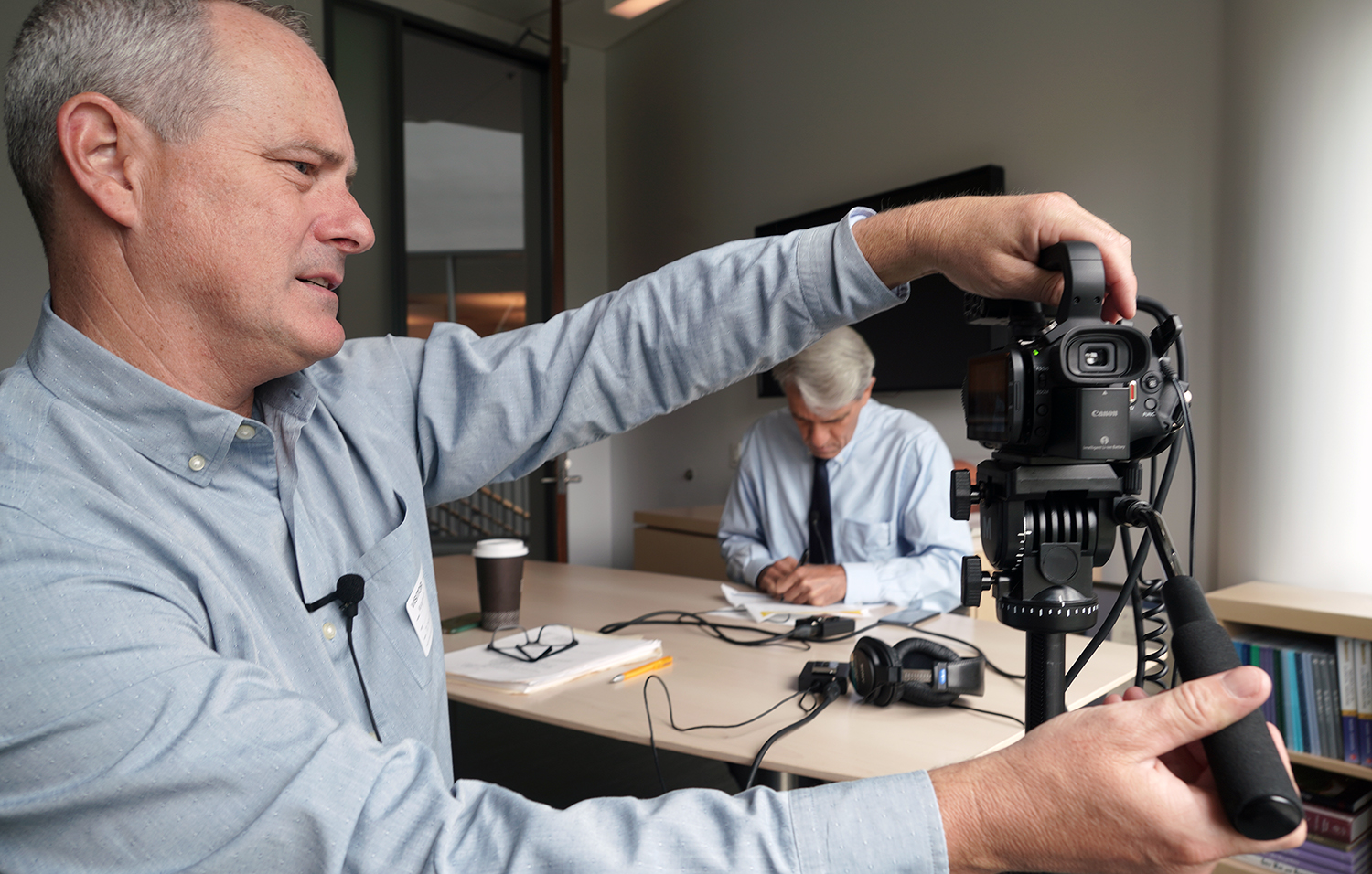
“Interviews are not like books, because people’s lives are not like books,” says Martin Meeker, director of The Bancroft Library’s Oral History Center. “They go off in different directions.”
Exhibit A: André Tchelistcheff.
Before helping put California wine on the map after Prohibition, Tchelistcheff’s life more closely resembled a Tolstoy epic than the early story of someone destined for enological excellence.
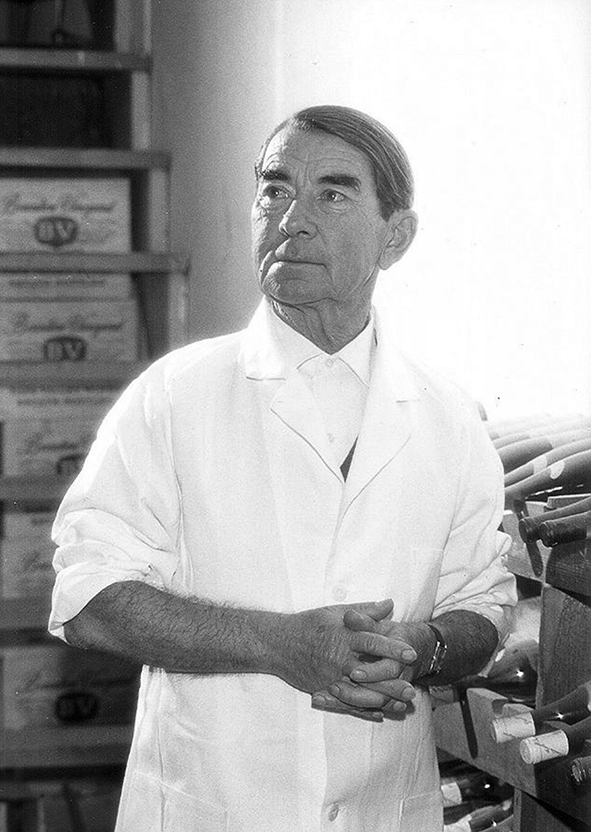
Tchelistcheff was born in Russia at the dawn of the 20th century. During the revolution, his family’s house was destroyed, their dogs hanged. (Tchelistcheff’s father was “very liberal,” and both father and son fought in the anti-Communist White Army.)
“These were awful days, days of fires and destruction, terror and blood,” Tchelistcheff, who died in 1994, recalled in an interview in the OHC archives.
Victims of the Communist purge, Tchelistcheff and his family fled the country, ending up in France. There, Tchelistcheff was recruited to come to America to make wine.
The rest is winemaking history, documented in detail across the transcripts of six interviews with Tchelistcheff, conducted in 1979 by the Regional Oral History Center (later to become the OHC).
“There’s this whole story of him being a Russian refugee,” Meeker says of Tchelistcheff. “That wouldn’t have been in the metadata” — the nuggets of information (including the oral history’s title, the subject’s name, and a description) that the OHC’s search tool crawls to help researchers find interviews.
Simply put, if researchers don’t know exactly what they’re looking for, these parts of Tchelistcheff’s life — and many other firsthand stories lurking in the OHC’s archives — are left in the dark, undiscoverable.
But soon, all of that will change.
This fall, the OHC is unveiling a new advanced search feature on its website, as well as an interactive tool that marries transcripts with video footage, making it easier to navigate hourslong interviews. These developments will connect people with the materials they need — and solidify the center’s position on the new frontier of oral history.
Opening up possibilities
Meeker started at the center in 2003 as a postdoctoral fellow. In 2004, he became an interviewer/historian, moving up to associate director in 2012.
As the head of the center, a position he assumed two years ago, Meeker still conducts numerous interviews (including a short one recently with John Podesta, the onetime presidential adviser whose name is now synonymous with the widely publicized 2016 email leak).
In the 15 years he’s been at the center, Meeker has experienced — and overseen — some big changes.
“Historically, our interviews were that,” Meeker says, pointing at a thick blue volume perched on a chair in his office in Bancroft. “Long, clothbound oral history transcripts.”
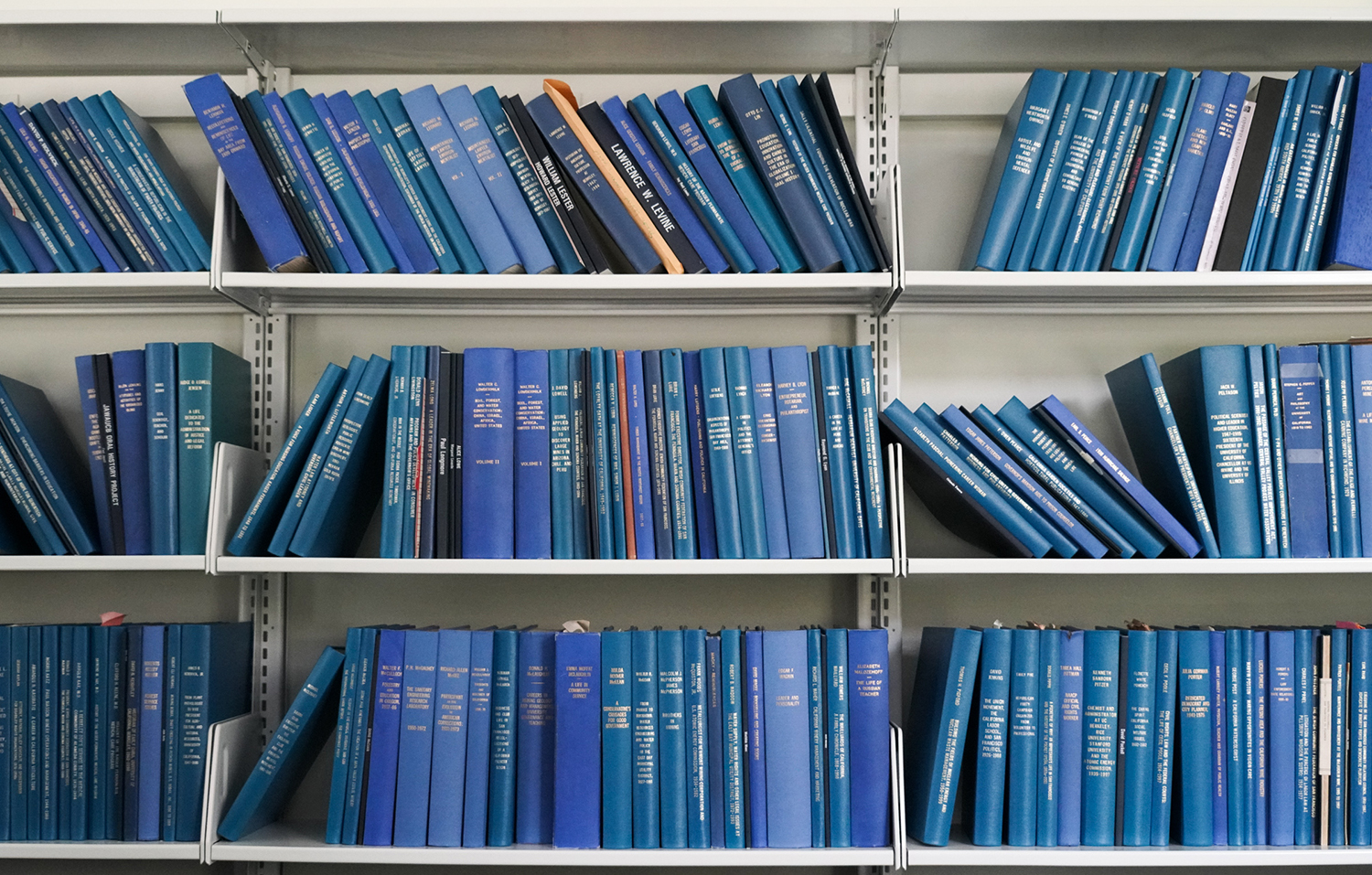
If you wanted to access the archive, you’d have to crack open a physical tome after ordering it or visiting Bancroft or UCLA. If you were lucky, you could listen to the recordings at Bancroft, but the audio wasn’t easily accessible or loanable.
In the early 2000s, the OHC did something that, at the time, was groundbreaking: putting its vast collection of interviews online. (“We were actually on the cutting edge of that technology,” Meeker says.)
But the interviews’ online presence wasn’t much to look at — it was basically a collection of web pages — and transcripts were not searchable.
Without a comprehensive search, tracking down interviews is “like a needle in a haystack or a buried treasure kind of thing,” says David Dunham, project manager of the OHC’s Rosie The Riveter World War II American Home Front Oral History Project. Along with his colleagues and dozens of student workers and interns, Dunham has been working on the OHC’s new developments for the past two years.
In 2016, the OHC launched a database search. But there was still one big drawback: The pages upon pages of interviews were online, but their text was unsearchable. How do you find out about, for example, Tchelistcheff’s experience as a refugee, if you know him only as a winemaker?
The solution: a tool that searches entire transcripts, leaving no stone of knowledge unturned.
With the new search, researchers can sift through the collection in greater detail — the difference between a rake and a fine-tooth comb. Type in the term “refugee” using the current search, and two results pop up. Enter that same term under the new system, and 352 results appear, including, yes, the oral history of André Tchelistcheff.
“It completely opens up so much possibility in the collection,” Meeker says.
‘A more dynamic way’
At the same time it launches the new search, the OHC is unveiling the Oral History Metadata Synchronizer, or OHMS.
OHMS, developed for oral historians by the University of Kentucky, is an interface that enriches researchers’ experience by syncing video footage with interview transcripts. Researchers also have the ability to search within the transcript, pulling up not only the exact written words they’re searching for, but also the spot in the video when those words are said. (The OHC started recording its subjects on video about 15 years ago, and most interviews these days are captured on video.)
The first set of oral histories accessible through OHMS will be the Rosie The Riveter World War II American Home Front Oral History Project, with funding from the National Park Service. The oral history project — a partnership with the city of Richmond and the park service, made up of interviews spanning from 2002 to 2017 — explores the wartime experiences of Bay Area residents.
Shanna Farrell, an interviewer at the OHC, says OHMS is a “fantastic” new tool.
“It’s a good way for people to search the collection and use the collection in a more dynamic way,” she says. “It’s helping people use the interviews more effectively.”
“Transcripts can be unclear,” Dunham says, noting that the subtleties of speech and body language can encode another layer of meaning that is lost when using the written word alone. “So if you can be reading a transcript … and see the video and audio, you can be more certain of the meaning.
“That’s the most exciting thing to me,” he says.
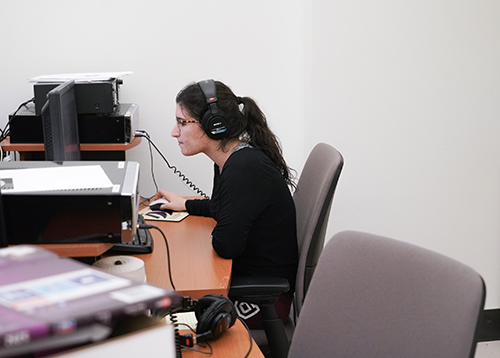
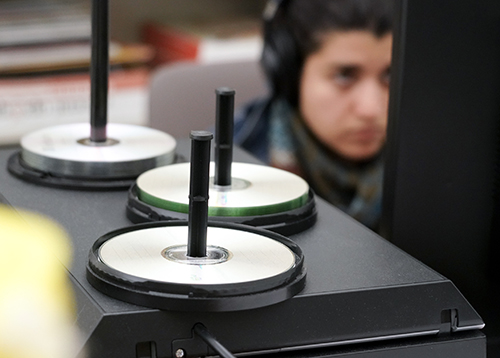
So what comes next for the OHC?
One day, the center hopes to launch a portal for high school students and teachers, one that will help kids use the OHC’s archives to enrich their education.
“A big thing in Common Core (the nationwide K-12 educational standards) is they want students to think critically about media,” says Paul Burnett, an interviewer with the OHC. “We really want to be able to contribute to that. Teachers are being asked to teach that, but they’re not being given any resources.”
One day, students could engage with the OHC’s interviews firsthand and use them to build projects, from mini-documentaries to podcasts, Burnett says.
“One of the dreams is having all the video there for (students) to do their own interpretive works,” Dunham says.
But for now, the portal is on the wish list, awaiting a source of funding.
In the meantime, the folks at OHC have their hands full, whether they’re preparing for the annual Summer Institute or documenting the firsthand stories that make up the rich tapestry of the West.
The OHC’s extensive archive, totaling about 4,000 interviews, includes everything from Alice B. Toklas’ recollections of her life with Gertrude Stein, to Ansel Adams’ musings on why he prefers black-and-white over color photography, to Dreyer’s official taster talking about the invention of cookies-and-cream ice cream (and his taste buds, reportedly insured for a million dollars).
And the archive is only getting bigger: With five interviewers on staff, Meeker notes, the center conducts an estimated 500 hours of interviews a year — more than 20 days’ worth of conversations.
“It’s a lot of oral history being done,” Meeker says. “I think that makes us, without question, the most productive oral history program in the country, in terms of self-produced interviews.
“It’s a pretty awesome operation in that way.”